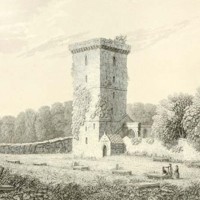
(1) Engraving of the Old Church of St Serf’s, 1853 (Source: William Muir, ed, Notices of the Local Records of Dysart (Glasgow: Maitland Club 1853), p. 22.

1780 drawing of the chapel. (Source: Anne Watters, Kirkcaldy's Churches: Brief Histories)
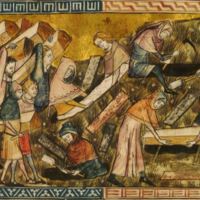
A fourteenth-century illustration of plague burials in Tournai. Similarly rushed burials probably took place in Fife. (Credit: Pierart dou Tielt / Wikimedia)
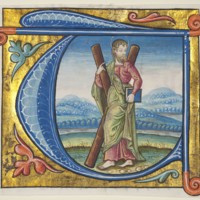
A late medieval image of St Andrew with his traditional X-shaped cross. (Credit: University of St Andrews)
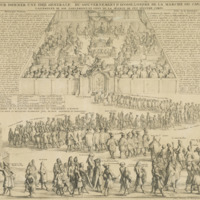
A late seventeenth-century French engraving of the Scottish Parliament. The different estates which made up the parliament are shown in procession at the bottom of the page and sitting at the top. (Credit: National Galleries of Scotland)
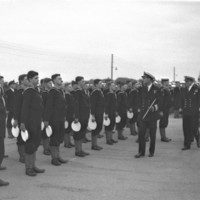
A naval inspection at Crail Aerodrome in about 1940. Early in the Second World War a chapel was built at Crail Airfield for the service personnel. (Credit: George Cowie / University of St Andrews)
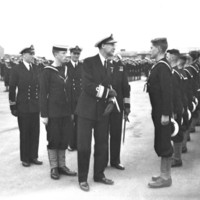
A naval inspection at Crail Airfield in the early 1940s. (Source: University of St Andrews Library, GMC-5-16-17.)
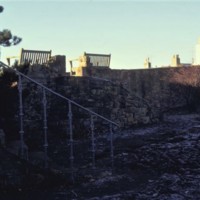
A section of old masonry which perhaps formed part of Crail Castle. (Source: William Jack / University of St Andrews Library, WMJ-EN-115-2.)

A woodcut showing protestors objecting to Archbishop Spottiswoode's efforts to introduce the Scottish Prayer Book. (Credit: Wikimedia)
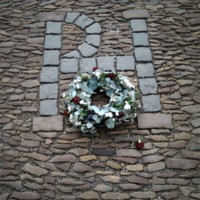
A wreath and the letters PH marking the site of Patrick Hamilton's execution on North Street in St Andrews. (Credit: Bess Rhodes)
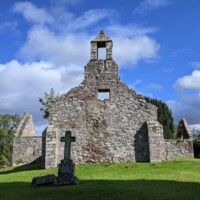
Abdie Old Parish Church (Bess Rhodes).
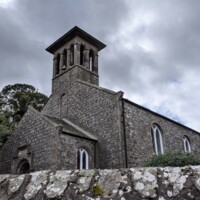
Abdie and Dunbog Parish Church (Bess Rhodes).
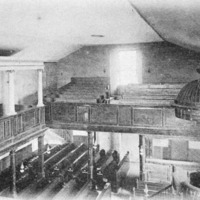
Aberdour Former Parish Church Interior (before 1926).
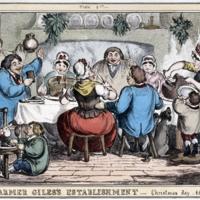
An English cartoon by William Heath making fun of Christmas festivities in the countryside in about 1800. (Credit: The Board of Trustees of the Science Museum, London)

An anonymous engraving of King James VI and I. (Credit: National Galleries of Scotland)

An anonymous engraving of Queen Mary II. With her husband William of Orange, Mary authorised the restoration of Presbyterianism in Scotland. (Credit: National Galleries of Scotland)
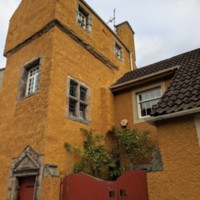
An early seventeenth-century house in Inverkeithing. In July 1651 there was a battle fought just to the south of Inverkeithing between English Parliamentarians and Scottish supporters of Charles II. (Credit: Open Virtual Worlds / University of St Andrews)
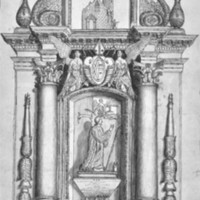
An eighteenth-century drawing of the monument to Archbishop Sharp in Holy Trinity Church, St Andrews. A relief near the base of the monument shows the archbishop's murder. (Credit: University of St Andrews)

An eighteenth-century painting of St Mary's College in the University of St Andrews. John Douglas was for many years a member of St Mary's. (Credit: University of St Andrews)

An engraving of James Francis Edward Stuart (also known as the Old Pretender). In normal circumstances James would have been king of Scotland and England but legislation was passed banning Roman Catholics from the throne. (Credit: National Galleries of Scotland)
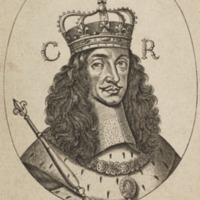
An engraving of King Charles II by William Fairthorne. (Credit: National Galleries of Scotland)
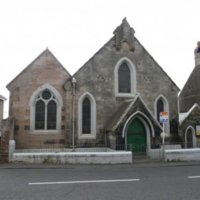
Anstruther Baptist Church (2007) (Source: © Copyright 2021, SCHR Ltd)
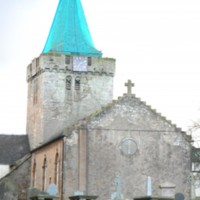
Anstruther Church, exterior, from south east (Source: R. Fawcett)
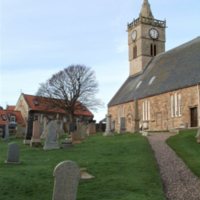
Anstruther Easter Parish Church (Source: Bess Rhodes 2021)
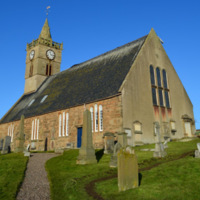
Anstruther Easter, St Adrian’s (Source: © Copyright Richard Sutcliffe and licensed for reuse under this Creative Commons Licence)
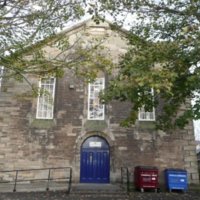
Anstruther Erskine United Free Church (2007) (Source: © Copyright 2021, SCHR Ltd)

Anstruther Evangelical Church (2007) (Source: © Copyright 2021, SCHR Ltd)
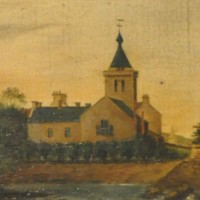
Anstruther St Nicholas, 1844, Taylor (Source: R. Fawcett)
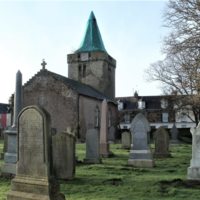
Anstruther Wester (Source: Bess Rhodes 2021)
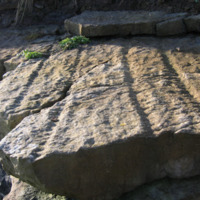
Arthropleura Tracks
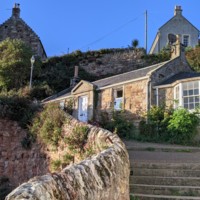
Bankhead Brae in Crail. An Episcopal chapel was located in this area during the early eighteenth century. (Source: Open Virtual Worlds / University of St Andrews.)
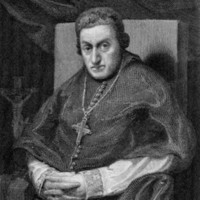
Bishop George Hay was the Roman Catholic leader responsible for Lowland Scotland in the late eighteenth century. In 1779 Hay's house in Edinburgh was burned during anti-Catholic protests. (Credit: G.A. Periam / Wikimedia)
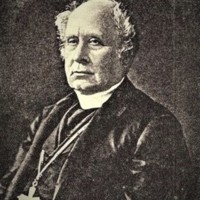
Bishop John Strain - the first Archbishop of St Andrews and Edinburgh after the Roman Catholic hierarchy was reintroduced to Scotland. (Credit: Wikimedia)
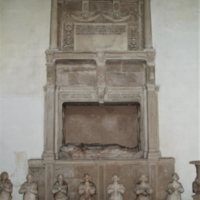
Bruce of Culross and Carnock Monument (Source: Bess Rhodes)

Buckhaven Baptist Church (Source: Amanda Gow, 2007)

Buckhaven Baptist Church (Source: Bess Rhodes, 2021)
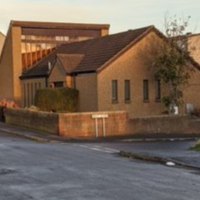
Buckhaven Church of God (Bess Rhodes, 2021)
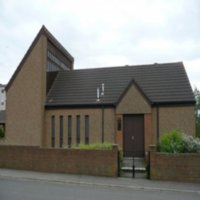
Buckhaven Church of God (Source: Amanda Gow, 2007).
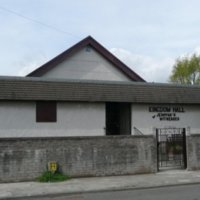
Buckhaven Kingdom Hall of Jehovah’s Witnesses (Source: Amanda Gow, 2007)
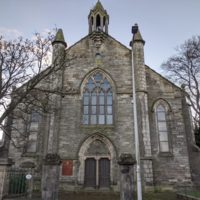
Buckhaven Parish Church (formerly St Davids) (Source: Bess Rhodes, 2021)
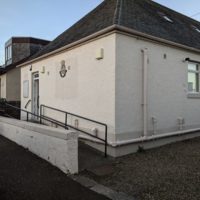
Buckhaven Salvation Army (Source: Bess Rhodes, 2021)
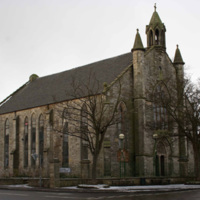
Buckhaven and Wemyss Parish Church (Source: Presbytery of Kirkcaldy, 2021)
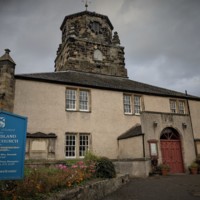
Burntisland Parish Church was one of the first churches built in Fife after the Reformation. It was designed for listeners to be able to focus on the preaching and formed a major departure from the traditional layout of churches. (Credit: Open Virtual Worlds / University of St Andrews)

Burntisland Parish Kirk
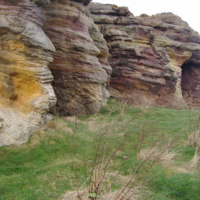
Caiplie Coves
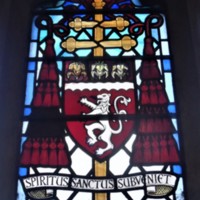
Cardinal Gray's coat of arms on a window in St Mary's Cathedral in Edinburgh. (Credit: Sheila1988 / Wikimedia)
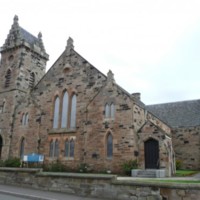
Cellardyke Parish Church (Source: © Copyright 2021, SCHR Ltd)
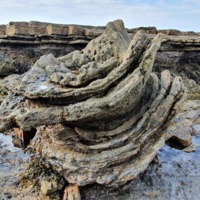
Cellardyke Rose

Chalmers Memorial Church c.1890 (Source: Erskine Beveridge Collection)
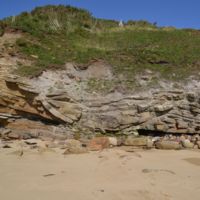
Channel, Roome Bay
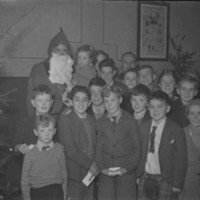
Christmas party in St Andrews in 1947. Father Christmas is dressed in the traditional red gown worn by St Andrews undergraduates. (Credit: George Cowie / University of St Andrews)
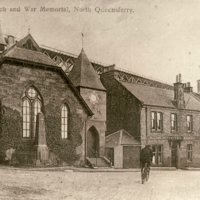
Church and War Memorial, North Queensferry
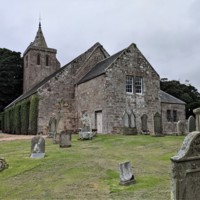
Crail Parish Church in 2021. Marks from the changing rooflines of the church over the centuries can be seen on the tower and end wall of the nave. (Source: Open Virtual Worlds / University of St Andrews.)

Crail Parish Church in early September

Culross Abbey (Parish Church), Fife

Culross Abbey Tower (Source: Bess Rhodes 2021)
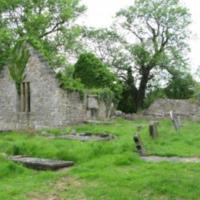
Culross Church Exterior (Source Fawcett, 2011)
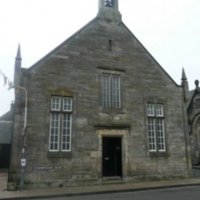
Culross Free Church (Source: Amanda Gow, 2007).
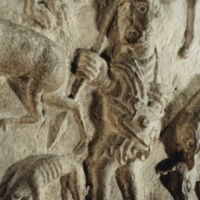
Detail of a hunting scene on the St Andrews Sarcophagus. (Credit: University of St Andrews)
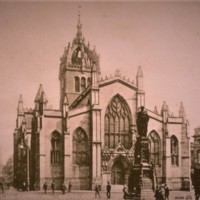
During the 1590s the Scottish Parliament usually met in St Giles' Kirk in Edinburgh. This photograph shows St Giles' in the 1870s. (Credit: University of St Andrews)

During the eighteenth century many Episcopal services were adapted from the Scottish Prayer Book of 1637. Revised selections from the Prayer Book were sometimes published. These were called 'wee bookies'. (Credit: John Dowden)
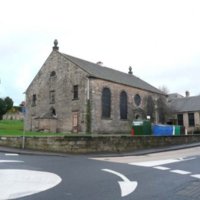
Dysart Barony Church (Source: Richard Fawcett, 2012)
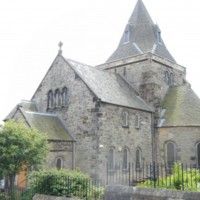
Dysart St Clair Parish Church (Source: Richard Fawcett, 2012)

Dysart, St Serf's Cave (Source: R. Fawcett)
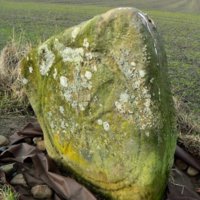
Early Christian carvings on the Skeith Stone. (Credit: James Allan / Wikimedia)

Electromagnetic Survey

Engraving of Queen Anne by J.C. Marchand. Anne was the first ruler of the newly created United Kingdom. (Credit: National Galleries of Scotland)
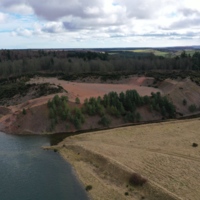
Esker St Fort
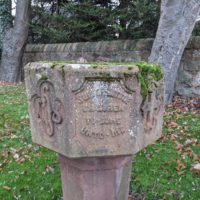
Font of St Michael’s Church, Buckhaven (Source: Bess Rhodes, 2021)
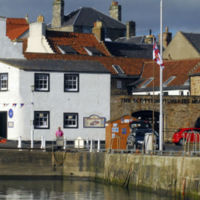
Former site of Chapel of St Ayle in Anstruther Easter (Source: Creative Commons)

German Seaman’s Mission (Source: Vintage Lundin Links and Largo).
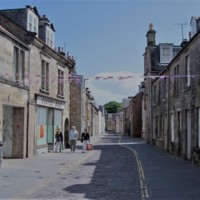
Gospel Hall, Market Street, St Andrews. (Source: Bess Rhodes)
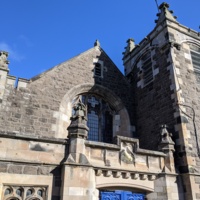
Gothic revival carving above the main entrance to Newburgh Parish Church. (Source: Open Virtual Worlds / University of St Andrews)
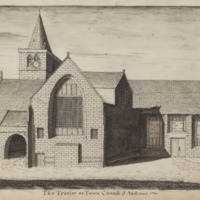
Holy Trinity Church in 1767. Drawing by John Oliphant. (Source: University of St Andrews Library, OLI-16. Available at: https://collections.st-andrews.ac.uk/item/trinity-church-st-andrews/93065)
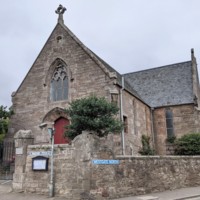
Holy Trinity Church in 2021. (Source: Open Virtual Worlds / University of St Andrews.)
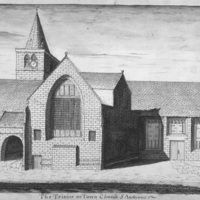
Holy Trinity Church in St Andrews. This image shows the church in the eighteenth century. The medieval stained glass has been removed and several windows partly blocked up to fit with Reformed ideas on church design. (Credit: University of St Andrews)
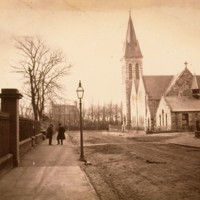
Hope Park Church in St Andrews in about 1860. Hope Park was one of many United Free Church congregations to join the Church of Scotland in 1929. (Credit: University of St Andrews)

Hope Park Church in about 1860. (Source: University of St Andrews Library, ALB-49-33. Available at: https://collections.st-andrews.ac.uk/item/u-p-united-presbyterian-church-st-andrews/80687)
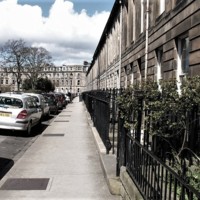
Hope Street and Howard Place in St Andrews near to the Friends Meeting House. (Source: Jim Bain / Wikimedia)
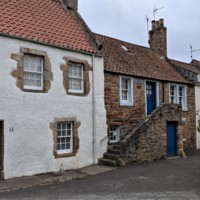
Houses on Rose Wynd in 2021. (Source: Open Virtual Worlds / University of St Andrews.)
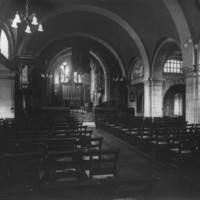
Interior of All Saints’ Church in about 1920. (Source: University of St Andrews Library, GMC-F-94.)

Interior of All Saints’ Church in about 1920. Manifest.
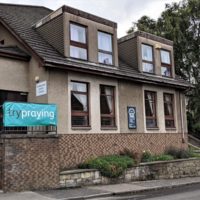
Inverkeithing Baptist Church (Source: Bess Rhodes)

Inverkeithing Episcopal Church (Source: Bess Rhodes)
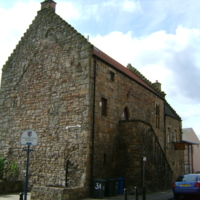
Inverkeithing Friary, Inverkeithing

John Knox - one of best known Protestant preachers in Reformation Scotland. (Credit: Wikimedia)
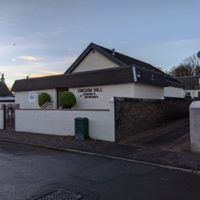
Kingdom Hall of Jehovah’s Witnesses, Buckhaven (Source: Bess Rhodes, 2021)
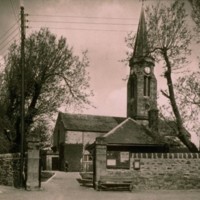
Kingsbarns Parish Church in the early twentieth century. During the 1730s Kingsbarns became the scene of a dispute between the congregation and the patron of the parish over the appointment of a new minister. (Credit: University of St Andrews)
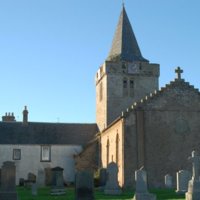
Kirk, Anstruther Wester

Linktown Church in Kirkcaldy stands on the site of an eighteenth-century Burgher Church. For many years Kirkcaldy was a focal point for religious dissent. (Credit: Kilnburn / Wikimedia)
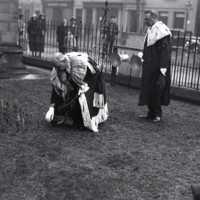
Local dignitaries place crosses in the ground outside Holy Trinity Church in St Andrews on Armistice Day in 1936. (Credit: University of St Andrews)
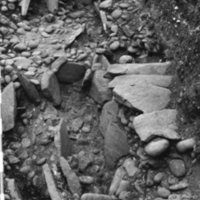
Long- Cist Burial, Isle of May (Source: RCAHMS)
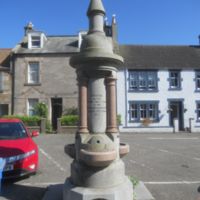
Memorial Fountain, Crail
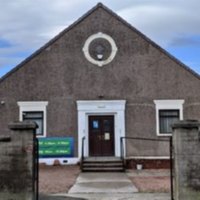
Methil Evangelical Church (Source; Bess Rhodes)
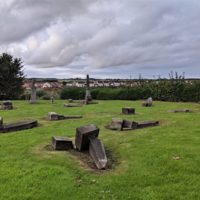
Methil Hill Cemetery (Source: Bess Rhodes 2021)
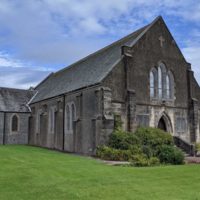
Methil and Denbeath Parish Church (Source: Bess Rhodes)

Newburgh was one of a number of Fife communities where people seceded from the Church of Scotland in the 1730s and 1740s. View across Newburgh and the River Tay in about 1894. (Credit: University of St Andrews)

North Street around the site of St Anna’s Chapel, c. 1580. The larger building with three windows towards the centre of the image may represent the former chapel. (Source: John Geddy, ‘S. Andrew sive Andreapolis Scotiae Universitas Metropolitana’. NLS, MS.20996. Available at: http://maps.nls.uk/towns/rec/215)

North Street in about 1846. The bell turret of Martyrs’ Kirk can be seen on the left-hand side of the street, opposite St Salvator’s Chapel. (Source: University of St Andrews Library, EPM-JA-10. Available at: https://collections.st-andrews.ac.uk/item/north-street-st-andrews/100475)
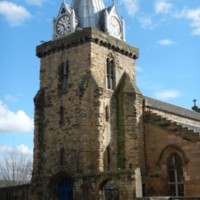
Parish Church of St Peter, West Tower (Source: Tom Turpie)
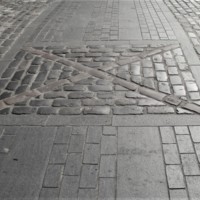
Pavel Kravar was burned at the stake beside the market cross in St Andrews. A saltire in the cobbles on Market Street shows where the cross once stood. (Credit: Bess Rhodes)

Photograph of Pittenweem Priory in the 1940s. One of the priory outbuildings was home to an eighteenth-century Episcopal congregation. (Credit: University of St Andrews)
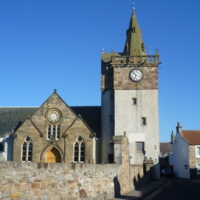
Pittenweem Parish Church and Tolbooth
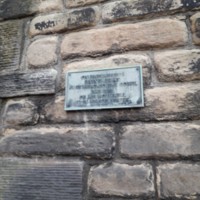
Plaque outside the Parish Church of Inverkeithing (Source: Tom Turpie)

Point of Interest Key
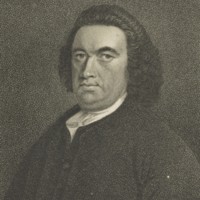
Portrait of John Glas, the founder of the Glasites. (Credit: National Galleries of Scotland)

Pre historic map key

Pre-Ref Methil Church
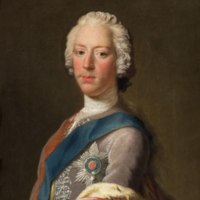
Prince Charles Edward Stuart, also known as the Young Pretender. Portrait by Allan Ramsey. (Credit: National Galleries of Scotland / Wikimedia)

Raised beach platforms, Kingcraig
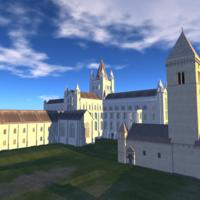
Reconstruction of St Andrews Cathedral in 1318. The older church of St Rule can be seen on the right. (Credit: Open Virtual Worlds / University of St Andrews)
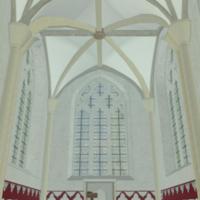
Reconstruction of the chapter house at St Andrews Cathedral in the late Middle Ages. (Credit: Open Virtual Worlds / University of St Andrews)

Reconstruction showing the possible appearance of the parish church of Holy Trinity in St Andrews, c.1559. (Credit: Open Virtual Worlds / University of St Andrews)

Reject - Detail St And Sarc
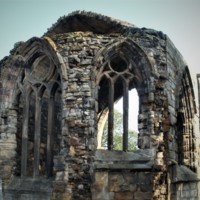
Remains of the late medieval church of the Dominican friars in St Andrews. (Credit: Bess Rhodes)
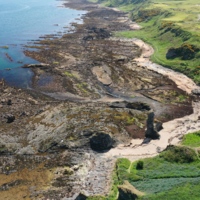
Rock and Spindle overvivew

Ruins of Lindores Abbey. This photograph looks across what would once have been the cloister. (Source: Open Virtual Worlds / University of St Andrews)
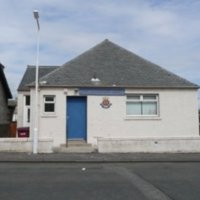
Salvation Army (Source: Amanda Gow, 2007)

Sampling Platforms, Kingcraig
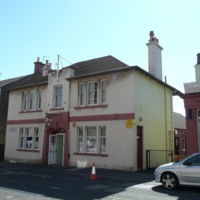
Scottish Coast Mission (Source: Places of Worship in Scotland)
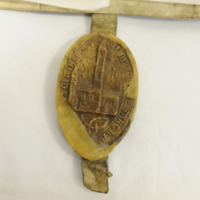
Seal of St Andrews Cathedral Priory showing St Rule’s Church. The now demolished nave and west frontage can be seen on the left side of the seal. (Source: University of St Andrews Library)

Site of Buckhaven Links Church (Source: Amanda Gow, 2007)
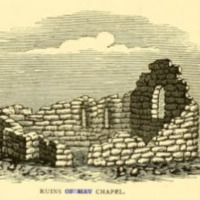
Sketch of the Ruins of the May chapel, 1869 (Source: Mathew Conolly, Fifiana: or Memorials of the East of Fife (Glasgow, 1869), p. 204)
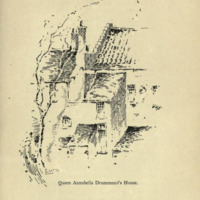
Sketch of ‘Annabella Drummond’s House’, 1894 (Source: John Geddie, The Fringes of Fife (Edinburgh, 1894), p. 41)

St Agatha’s Roman Catholic Church, Methil (Source: Bess Rhodes)

St Andrew's Episcopal Chapel on North Street in St Andrews in about 1865. Not long after this photograph was taken the episcopal congregation moved to a larger church on Queen's Terrace which is still in use today. (Credit: University of St Andrews)
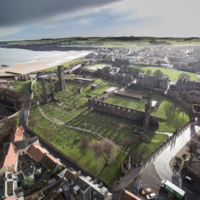
St Andrews
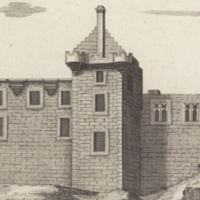
St Andrews Castle at the end of the seventeenth century. The windows of the castle chapel (with their quatrefoil tracery) can be seen to the right of the fore tower. (Source: John Slezer, ‘The Ruins of the Castle of St Andrews’, Theatrum Scotiae (1693). Available at: http://digital.nls.uk/slezer/engraving.cfm?sl=15)

St Andrews Castle seen from the air. Before the Reformation the castle was the residence of the Archbishops of St Andrews. (Credit: Open Virtual Worlds / University of St Andrews)

St Andrews’ Dominican friary shortly after the Reformation. (Source: John Geddy, ‘S. Andrew sive Andreapolis Scotiae Universitas Metropolitana’. NLS, MS.20996. Available at: http://maps.nls.uk/towns/rec/215)
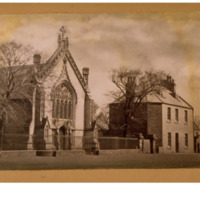
St Andrew’s Chapel in about 1865. (Source: University of St Andrews Library, ALB-10-62. Available at: https://collections.st-andrews.ac.uk/item/st-andrews-chapel-st-andrews/43875 )
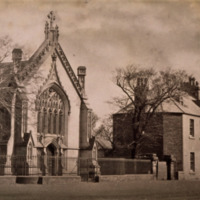
St Andrew’s Chapel in about 1865. (Source: University of St Andrews Library, ALB-10-62.)
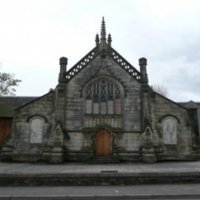
St Andrew’s Church, Buckhaven (Source: Amanda Gow, 2007)
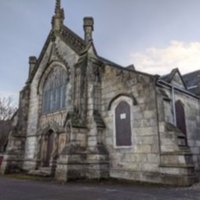
St Andrew’s Church, Buckhaven (Source: Bess Rhodes, 2021)
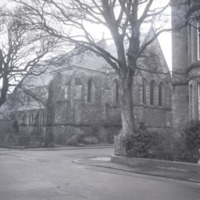
St Andrew’s Episcopal Church in about 1955. Photograph by George Cowie. (Source: University of St Andrews Library, GMC-29-20-4. Available at: https://collections.st-andrews.ac.uk/item/st-andrews-episcopal-church-queens-terrace-st-andrews/585969)

St Columba’s Episcopal Church, Aberdour
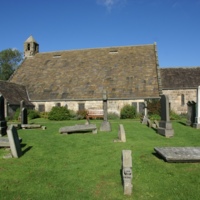
St Fillan's Church 20100930 from the south
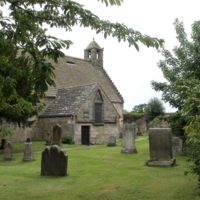
St Fillan's Church, Aberdour (Source: Bess Rhodes 2021)
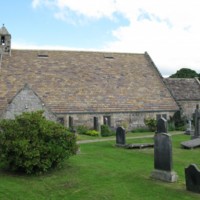
St Fillan's Church, Aberdour (Source: Richard Fawcett, 2012)

St Fort Quarry
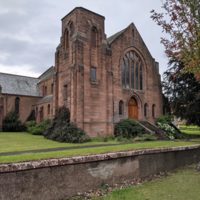
St George’s Church, East Wemyss (Source: Bess Rhodes, 2021)
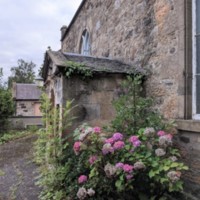
St John's Church in Inverkeithing has its origins in an eighteenth-century burgher congregation. In 1847 the congregation of St John's joined the United Presbyterians. The congregation later became Church of Scotland. (Credit: Open Virtual Worlds / University of St Andrews)
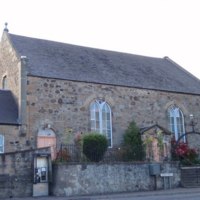
St John's Church in Inverkeithing has its origins in an eighteenth-century burgher congregation. In 1847 the congregation of St John's joined the United Presbyterians. The congregation later became Church of Scotland. The building now serves as the parish church for Inverkeithing. (Credit: Graeme Smith / Wikimedia)
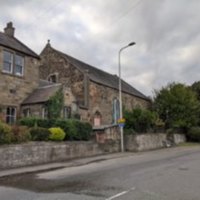
St John's, Inverkeithing (Source: Bess Rhodes)
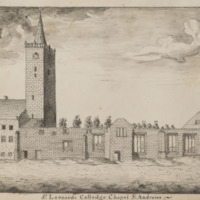
St Leonard’s Chapel after 1761. The chapel was then in ruins and being used to grow shrubs, although the (now demolished) college tower was still standing. (Source: University of St Andrews Library, OLI-15. Available at: https://collections.st-andrews.ac.uk/item/st-leonards-chapel/93063)
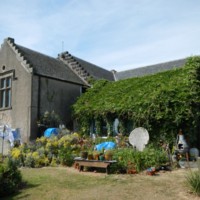
St Mary’s By the Sea (Source: Richard Fawcett 2012)
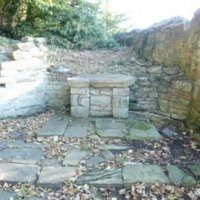
St Mungo’s Chapel (Source: Ewan Malecki (October 2007).
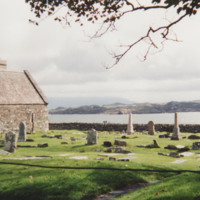
St Oran's Chapel on the island of Iona. (Credit: Libasstref / Wikimedia)
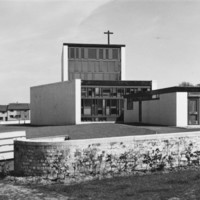
St Paul's Roman Catholic Church in Glenrothes in 1962. St Paul's was one of several new Roman Catholic churches built in Fife during the mid-twentieth century. (Credit: University of St Andrews)

St Peter's Episcopal Church in Kirkcaldy in about 1880. An Episcopal church was built in Kirkcaldy in 1811 following the lifting of restrictions in the 1790s. The building shown here was built in 1844 and demolished in the 1970s. (Credit: University of St Andrews)
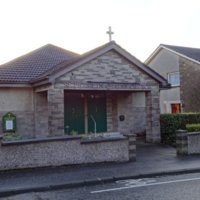
St Peter-in-Chains, Hope Street, Inverkeithing (Source: Creative Commons)
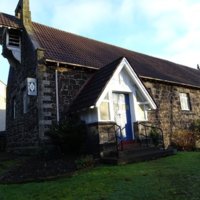
St Peter’s Episcopal Church (Creative Commons) © Copyright 2021, SCHR Ltd. All rights reserved. Please contact us for permission to use this image.
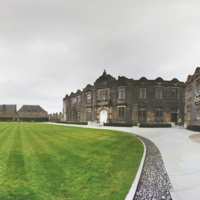
St Salvator's Quadrangle
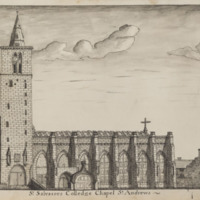
St Salvator’s Chapel in about 1767. Some of the original windows have been partly blocked up, others are covered with shutters. The medieval stone roof can still be seen. (Source: University of St Andrews Library, OLI-11. Available at: https://collections.st-andrews.ac.uk/item/st-salvators-college-chapel/93059)
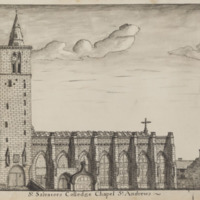
St Salvator’s Chapel in about 1767. Some of the original windows have been partly blocked up, others are covered with shutters. The medieval stone roof can still be seen. (Source: University of St Andrews Library, OLI-11.)
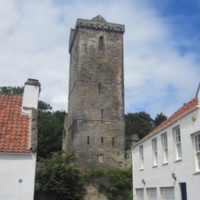
St Serf's Church, Dysart
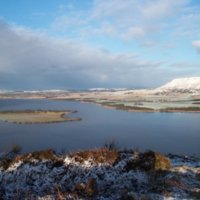
St Serf's Inch on Loch Leven. This island was home to an early Culdee community. (Credit: Mike Pennington / Wikimedia)
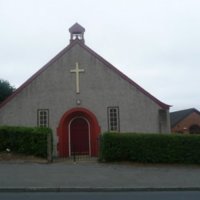
St Serf’s Roman Catholic Church (Source: Amanda Gow, 2007)
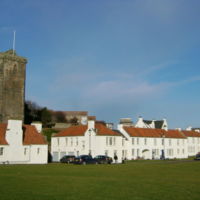
St Serf’s Tower and the Pan Ha (Source: Creative Commons)
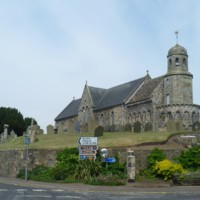
St. Athernase Church, Leuchars, Fife, Scotland
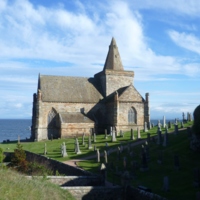
St. Monans Parish Church, Fife
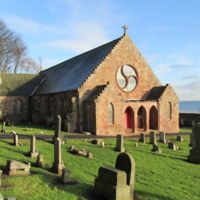
St_Adrian_s_West_Wemyss.jpg

St_Erat_Plaque__3_.jpg

St_Mary_s_Chapel_west_wemyss.jpg
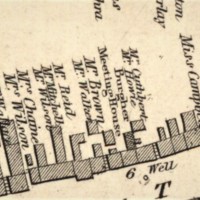
The Burgher Kirk shown in 1820 on John Wood’s plan of St Andrews. (Source: National Library of Scotland, EMS. X.009)
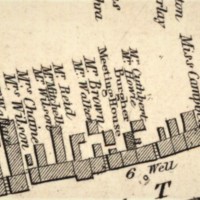
The Burgher Kirk shown in 1820 on John Wood’s plan of St Andrews. (Source: National Library of Scotland, EMS. X.009. Available at: https://maps.nls.uk/view/74400057)

The Christmas dinner at St Mary's was part of a wider effort to revive ceremonies associated with dining at the University of St Andrews. Sung graces and blessings were also reintroduced - as seen in this setting composed for the university by Sir Alastair Campbell Mackenzie in 1894. (Credit: University of St Andrews)
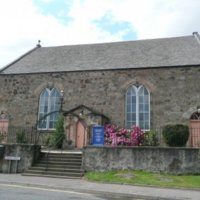
The Church of St John (Source: Amanda Gow, 2007) © Copyright 2021, SCHR Ltd. All rights reserved. Please contact us for permission to use this image.
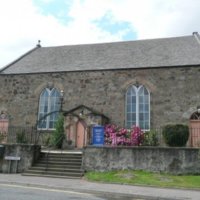
The Church of St John (Source: Amanda Gow, 2007) © Copyright 2021, SCHR Ltd. All rights reserved. Please contact us for permission to use this image.

The Collegiate Church at Crail was reformed in June 1559, shortly before the Protestants descended on the religious capital of St Andrews. (Credit: Open Virtual Worlds / University of St Andrews)
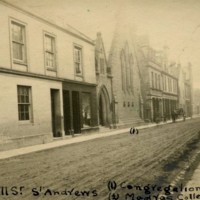
The Congregational Church on Bell Street in 1895. (Source: University of St Andrews Library, StA-BellS-1. Available at: https://collections.st-andrews.ac.uk/item/bell-street-st-andrews-from-n/123317)
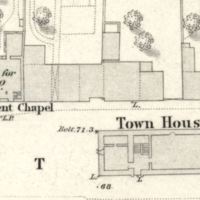
The Congregational chapel on Market Street in the 1850s. (Source: 1854 Ordnance Survey Map of St Andrews. Available at: https://maps.nls.uk/view/74416778)

The Duke of Wellington backed Catholic emancipation in 1829. As prime minister he helped steer the legislation through parliament and put pressure on George IV to agree to the reforms. (Credit: English Heritage / Wikimedia)
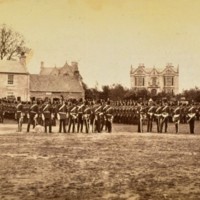
The Fife militia at Cupar in 1862. Until the 1790s Catholics were banned from serving in the county militias (which served on a part-time basis) or in the regular army. (Credit: University of St Andrews)
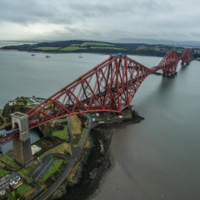
The Forth Bridge seen from the air near North Queensferry. The Victorian railway bridge crosses the Forth close to the route of Queen Margaret’s historic ferry. (Credit: Open Virtual Worlds / University of St Andrews)
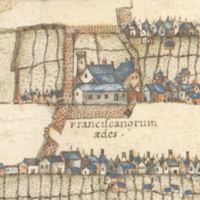
The Franciscan friary in St Andrews shortly after the Reformation. (Source: John Geddy, ‘S. Andrew sive Andreapolis Scotiae Universitas Metropolitana’. NLS, MS.20996. Available at: http://maps.nls.uk/towns/rec/215)
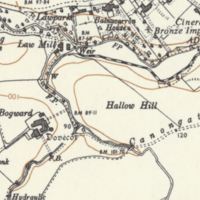
The Hallow Hill area in 1968 before large-scale housing development. The hill is bounded on the north by the Kinness Burn, to the west by the Cairnsmill Burn, and to the south by the medieval Canongate. (Source: Ordnance Survey, Sheet NO 41 NE. Available from the National Library of Scotland: https://maps.nls.uk/view/188141295)
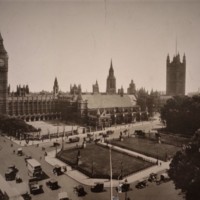
The Houses of Parliament at Westminster in 1919. (Credit: University of St Andrews)
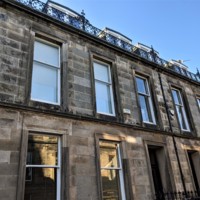
The Meeting House for the Society of Friends on Howard Place. (Source: Open Virtual Worlds / University of St Andrews)

The United Free Church in Leuchars in 1903. This church was built in the 1890s for a Free Church congregation. (Credit: University of St Andrews)

The United Free Church in Newport in about 1903. This church was one of several founded in the nineteenth century by congregations who broke away from their traditional parish churches over the question of lay patronage. (Credit: University of St Andrews)
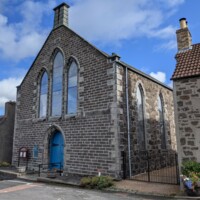
The United Reform Church on Clinton Street. (Source: Open Virtual Worlds / University of St Andrews)
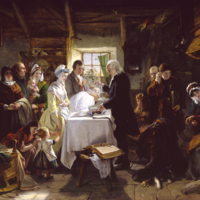
The Victorian artist John Philip imagines an eighteenth-century Scottish baptism in a private house. (Credit: Aberdeen Art Gallery)
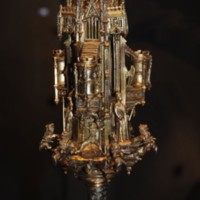
The ceremonial mace of St Salvator's College (one of the three colleges at the medieval University of St Andrews). The mace was commissioned by Bishop James Kennedy in 1461. (Credit: Sam Taylor / University of St Andrews)
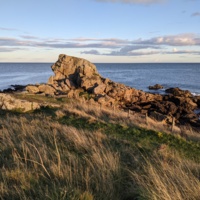
The coast at Kilminning. Remains of what may have been an early chapel have been discovered in this area. (Source: Open Virtual Worlds / University of St Andrews.)

The coastline of St Andrews from the air. St Peter’s Chapel may have stood in the area a little to the right of centre of this image. (Source: Open Virtual Worlds / University of St Andrews))
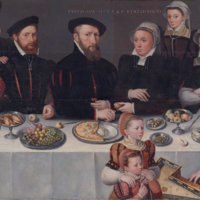
The family of a wine-merchant in Antwerp enjoy a celebratory meal in the 1560s. In Scotland feasting and taking time off from work at Christmas came to be a punishable offence in the years after the Reformation. (Credit: Rijksmuseum / Wikimedia)
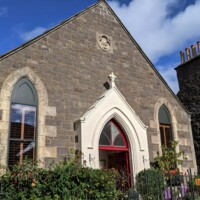
The former Baptist church on the north side of the High Street in Newburgh. This building was in use as a place of worship until the 2010s. (Source: Open Virtual Worlds / University of St Andrews)

The former Christian Brethren Hall on Greenside Place. (Source: Open Virtual Worlds / University of St Andrews)
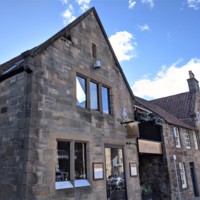
The former Salvation Army Hall on North Street, now a restaurant known as ‘The Rav’. (Source: Open Virtual Worlds / University of St Andrews)
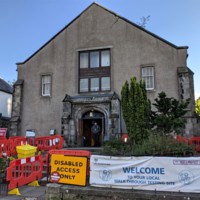
The former St Mary’s Church building, now the Victory Memorial Hall. This image shows the hall during the Covid-19 pandemic when it was in use as testing site. (Source: Open Virtual Worlds / University St Andrews)
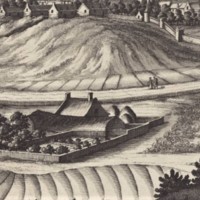
The former St Nicholas Hospital in the late seventeenth century. (Source: John Slezer, ‘The Prospect of the Town of St Andrews’, Theatrum Scotiae (1693). Available at: https://maps.nls.uk/view/91169135)

The former United Secession Church on North Street. (Open Virtual Worlds / University of St Andrews)

The former burgher chapel in Newburgh. The building now provides holiday accommodation. (Source: Open Virtual Worlds / University of St Andrews)
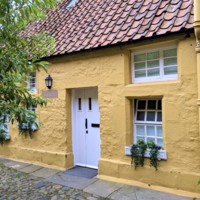
The former burgher kirk on Imrie’s Close. (Source: Open Virtual Worlds / University of St Andrews)
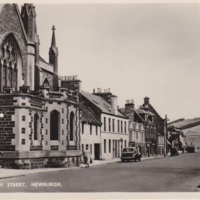
The impressive street frontage of St Katherine’s Parish Church in the mid-twentieth century. (Source: Newburgh Ancestry and History Society)
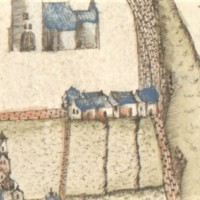
The line of smaller buildings on the lower right of this image may include the Chapel of St Mary Magdalene. Detail from the Geddy Map of c. 1580. (Source: John Geddy, ‘S. Andrew sive Andreapolis Scotiae Universitas Metropolitana’. NLS, MS.20996. Available at: http://maps.nls.uk/towns/rec/215)

The medieval church at St Monans built by David II. (Credit: Jim Bain / Wikimedia)
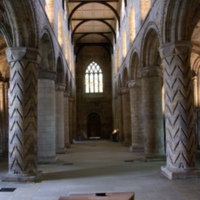
The medieval nave of Dunfermline Abbey. Dunfermline was the main burial place for the Scottish royal family from the time of Margaret's death until the early fourteenth century. (Credit: Otter / Wikimedia)

The medieval religious precinct at St Andrews viewed from the air. (Credit: Open Virtual Worlds / University of St Andrews)
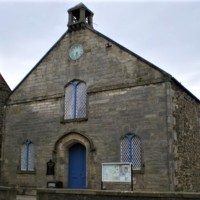
The modern parish church in Colinsburgh was built by a Relief Church congregation in the nineteenth century. It was probably on this site that the Relief Church first met in the 1760s. (Credit: Richard Law / Wikimedia)

The newly built St Leonard’s Church in about 1904. (Source: University of St Andrews Library, JV44554.)

The old piers at St Andrews Harbour. In the 1520s this harbour was the focus for smuggling illicit religious publications into Scotland. (Credit: Bess Rhodes)
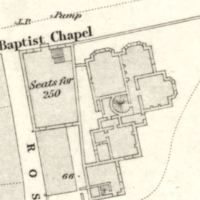
The original Baptist chapel on a mid-nineteenth-century map. (Source: 1854 Ordnance Survey Map of St Andrews. Available at: https://maps.nls.uk/view/74416778)
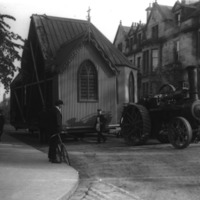
The original iron Church of St James being removed in 1909. (Source: University of St Andrews Library, GMC-F-95. Available at: https://collections.st-andrews.ac.uk/item/st-jamess-church-st-andrews/8269)
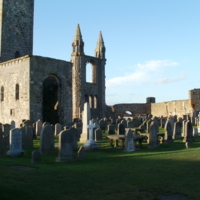
The original parish church of Holy Trinity was probably a little to the north of St Rule’s, in the area towards the centre and right side of this photograph. (Source: Bess Rhodes)
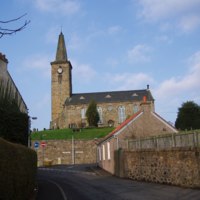
The parish church at Markinch. The church tower is thought to have been built during the reign of David I. (Credit: Mcwesty / Wikimedia)
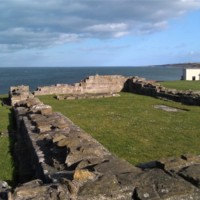
The remains of St Mary’s on the Rock. (Source: Open Virtual Worlds / University of St Andrews)
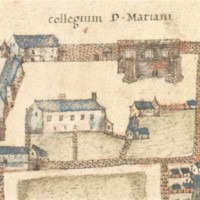
The roofless former chapel of St Mary’s College can be seen in this detail from the Geddy Map of c. 1580. (Source: John Geddy, ‘S. Andrew sive Andreapolis Scotiae Universitas Metropolitana’. NLS, MS.20996. Available at: http://maps.nls.uk/towns/rec/215)
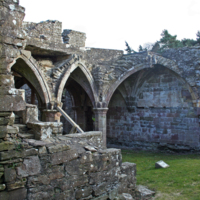
The ruins of the chapter house at the former Cistercian monastery at Balmerino. (Credit: Ed Marin / Wikimedia)
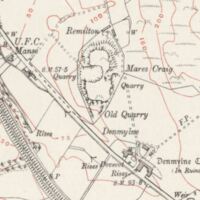
The site of the Mares Craig quarry in the early twentieth century. (Source: 1920 Ordnance Survey map of Fife and Kinross, Sheet VI.SE. Available at: https://maps.nls.uk/view/75530896).
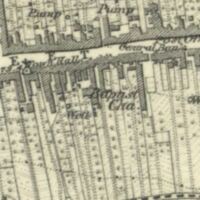
The site of the old Baptist chapel in Newburgh. (Source: 1855 Ordnance Survey Map of Fife, sheet 4. Available at: https://maps.nls.uk/view/74426821)
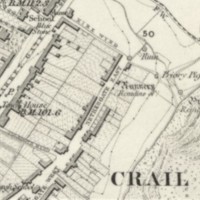
The site of the supposed ‘nunnery’ on Nethergate – perhaps in reality a medieval chapel. (Source: 1855 Ordnance Survey Map of Fife, sheet 20. Available at: https://maps.nls.uk/view/74426837)
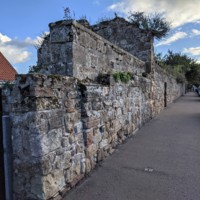
The site of the supposed ‘nunnery’ on Nethergate – perhaps in reality a medieval chapel. (Source: Open Virtual Worlds / University of St Andrews.)
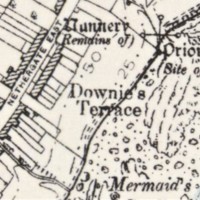
The site of the supposed ‘priory’ ruins. (Source: 1895 Ordnance Survey Map of Fife and Kinross, sheet XXIII. Available at: https://maps.nls.uk/view/75533145)
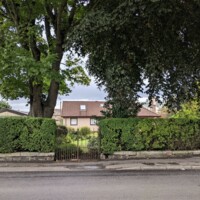
The site once occupied by St Katherine’s Episcopal Mission Church. The stone wall and iron gates are all that remain from the former church. (Source: Open Virtual Worlds / University of St Andrews)

The street called Greyfriars Garden now covers where the Observant Franciscan friary once stood in St Andrews. (Credit: Bess Rhodes)

The title page of Archbishop Hamilton's 'Catechism'. This was the first book ever printed in Fife. (Credit: Internet Archive)
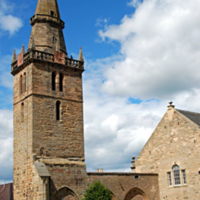
The tower of the old parish church of St Michael at Cupar. St Michael’s was one of the many churches rebuilt in Fife during the late Middle Ages, partly to make space for more chapels and side altars for masses for the dead. (Credit: Jim Bain / Wikimedia)
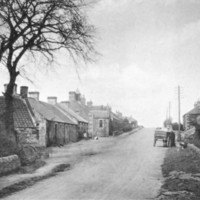
The village of Balmullo had an Anti-Burgher congregation in the 1740s. They may have met on the site of the building with a bell and a porch seen near the middle of this photograph from 1903. (Credit: University of St Andrews)
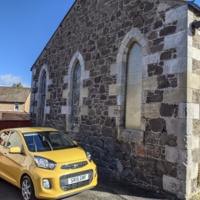
The west end of the former Livingstone Hall. (Source: Open Virtual Worlds / University of St Andrews)
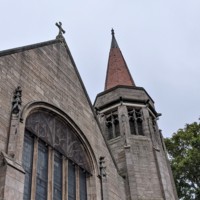
The west gable of Crail Community Hall – formerly St David’s Church. (Source: Open Virtual Worlds / University of St Andrews.)
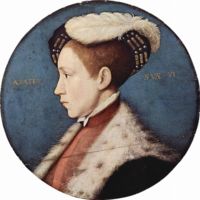
The young King Edward VI of England. Portrait perhaps by William Scrots. (Credit: The Met / Wikimedia)
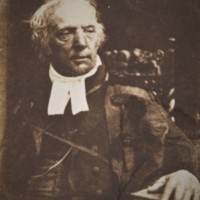
Thomas Chalmers was a leading evangelical minister and academic. Following the Great Disruption he became the first moderator of the Free Church. This portrait was by the pioneering photographers David Octavius Hill and Robert Adamson who set out to record the likenesses of the ministers at the Disruption Assembly. (Credit: University of St Andrews)

Thomas Chalmers was the first moderator of the Free Church. This portrait was by the pioneering photographers David Octavius Hill and Robert Adamson who set out to record the likenesses of the ministers at the Disruption Assembly. (Credit: University of St Andrews)
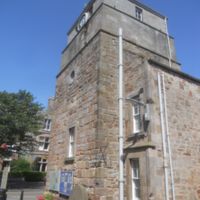
Tollbooth tower, Crail

Tollbooth, Crail

Townhill village on the edge of Dunfermline. (Credit: The Majestic Fool / Wikimedia)
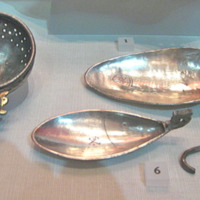
Two spoons with Christian symbols from a hoard found at Traprain Law, probably dating from about 410 AD. (Credit: Tyssil / Wikimedia)

United Presbyterian Church, Normand Road (Source: Stuart Mee, Dec. 2007)
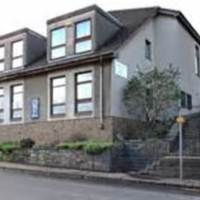
View of site from north east. (Source: Amanda Gow (August 2007), © Copyright 2021, SCHR Ltd. All rights reserved. Please contact us for permission to use this image.
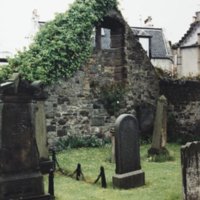
View of the West Gable of the Chapel of St James (Source: Farrell, Stuart, 1998)

Wellesley Parish Church, Methil (Source: Bess Rhodes)
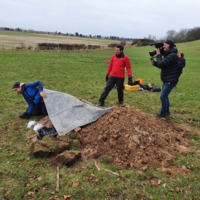
kincaple OSL sampling